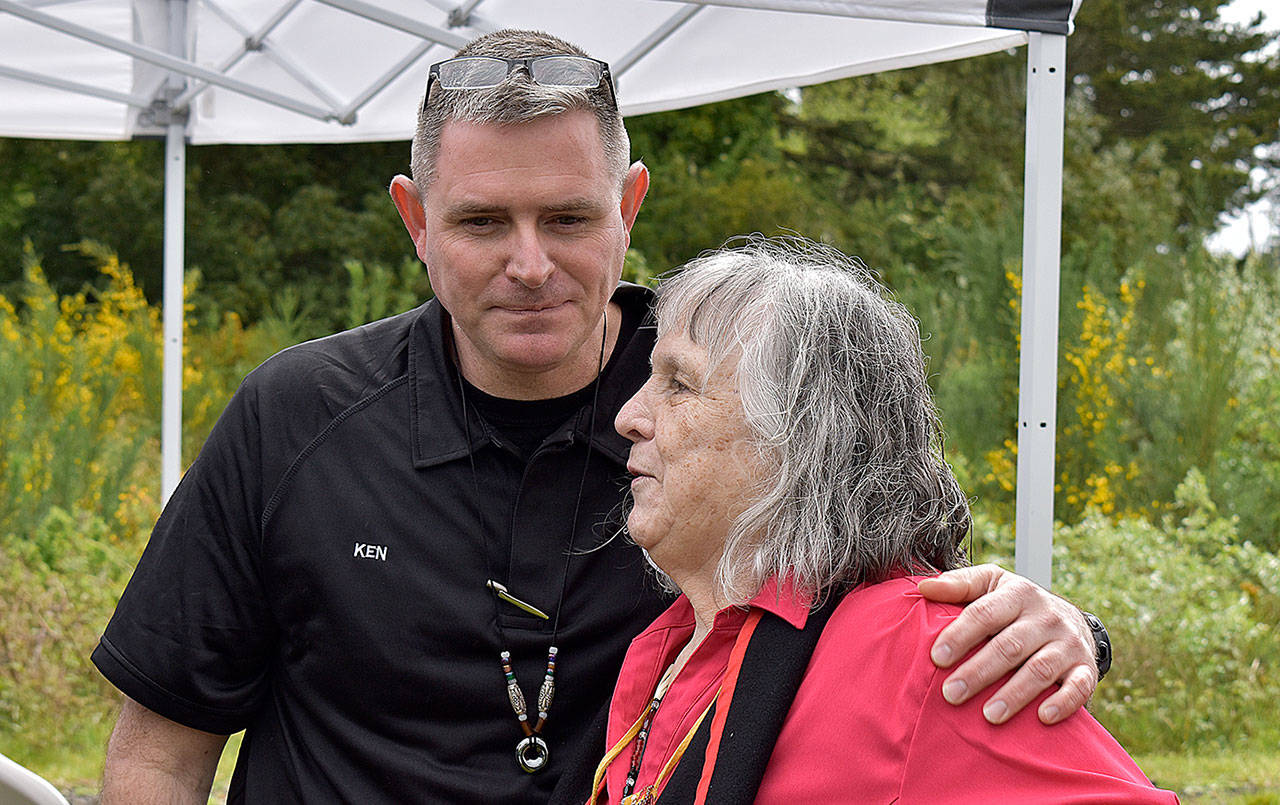By the end of this year, construction of the Shoalwater Bay Tribe’s tsunami evacuation tower should be complete, offering refuge to not just tribal members but hundreds of others who live in the Tokeland area if, and when, the “big one” hits.
It’s the second tsunami evacuation structure built on the coast, and the first funded primarily through a FEMA grant. The other tsunami evacuation structure was built in 2016 and sits atop the gym at at Ocosta Elementary School about 14 miles to the north.
“I’m truly happy this day has happened,” said Tribal Council Chairwoman Charlene Nelson at a groundbreaking ceremony Monday. “It happened because we all worked together to save lives.”
A great deal of the credit for the tower went to Lee Shipman, who retired as the tribe’s emergency management director in November.
“We’ve spent approximately 10 years working toward getting this tower built, for the tribe and community,” she said.
The tower will be situated a mile south of the tribe’s offices on Tokeland Road.
The tower is built to FEMA specifications that recommend 10 square feet per person. The two platforms, 40×50 feet in size and situated 40 and 50 feet above grade, can hold 300 people above a tsunami wave, but as current tribe emergency management director Ken Ufkin said, the tower can hold many more.
And nobody will be turned away.
Maximilian Dixon, state Emergency Management Division Hazards and Outreach Program supervisor, said the tribe’s choice of location impressed him.
“You all chose to build it here to protect the community,” he said. The location is on the eastern border of the reservation itself; by building it there, it’s within easier reach of the people who live off the reservation — the 80 or so tribal members and the 300 or so others in the immediate area will all have equal access to the shelter, along with visitors and anyone else needing to get to high ground.
The tower will be built next to the county’s second tsunami warning siren; the first was built at the service station at the intersection of State Route 105 and Tokeland Road, and a third was recently installed in Tokeland by the docks. The first two sirens were named after previous emergency management planners for the tribe, Dave Nelson and George Crawford, whom Shipman said were also instrumental in the efforts leading up to Monday’s groundbreaking.
Dixon recalled getting a call from Shipman several years ago, saying the tribe wanted to build a tower and apply for the funding to design and construct it. When he asked her how much time there was to apply for funding that cycle, she replied, “about a month.” Dixon immediately contacted partners at the state Department of Natural Resources, the University of Washington, FEMA and elsewhere to develop the grant application. “We got it all in and here we are today,” he said.
The tribe raised about $1 million for the project. The FEMA grant put the project over the top with a $2.2 million pre-disaster mitigation grant, enough to cover the cost of the project from start to finish. That finish, Shipman said, should be by the end of 2021.
Corina Allen, state Department of Natural Resources Chief Hazards Geologist, said the structure “will save hundreds of lives” if and when a tsunami-triggering Cascadia subduction zone earthquake, magnitude 9, hits the region and sends what is predicted to be an 8- to 10-foot wall of water over the area.
Shipman said Pacific County leadership played a key role in the tower’s path.
“It took two years to build trust between Pacific County and the Shoalwater Bay Tribe,” she said. “Not only is (the relationship) very strong now, but it also helped other tribes understand that the counties and tribes could do so much more if they worked together.”
Shipman became emotional as she went through the long list of partners who made the groundbreaking possible. Near the site, a bald eagle called during the presentation.
FEMA Region 10 Director Vince Maykovich noted the Shoalwater tower will be “the first structure of its kind ever funded through a FEMA grant.” He said the tribes’ persistence in getting the “much-needed structure” built “changed the way FEMA views pre-disaster mitigation.”
The tower itself will be steel-framed with a concrete over metal deck floor supported by wide flange beams and a grid of six concrete-filled steel tube columns. The relatively open construction is designed to reduce the force of the incoming tsunami, according to conceptual tower designers Degenkolb Engineers, who were also behind the design of the Ocosta tsunami evacuation structure.
The tower is built to withstand and offer refuge in a tsunami nearly 22 feet high and rushing in at up to 21 feet per second. Concrete piles support the steel building columns and will be buried 40-50 feet deep, said Ufkin, keeping the tower upright even with earth being scoured away by the wave action.
At the end of the Monday groundbreaking event, Shipman, Nelson, Maykovich and state Emergency Management Division Director Robert Ezell took the first ceremonial shovelful of dirt from the site, as trucks from Rognlin’s Construction, the local contractor that will build the tower, sat nearby, readying for the work ahead.



